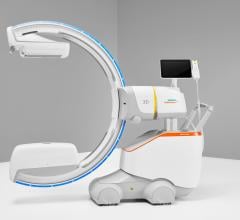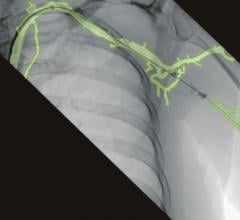
April 3, 2014 — Siemens Healthcare announced the U.S. Food and Drug Administration (FDA) has cleared the Cios Alpha, a new mobile C-arm system with flat-panel detector that boasts a power output of 25 kilowatts (kW) and has a field of view (FoV) that is up to 25 percent larger than conventional C-arms. Cios Alpha offers a host of features designed to boost the surgical team’s confidence and operational workflow, including an easy-to-use touch-screen interface, a unique position storage feature and an active cooling system that helps to ensure exceptional image quality during prolonged interventions.
“With imaging technology that helps overcome disruption and reduce inefficiency in the operating room (OR), the new Cios Alpha mobile C-arm will aid surgical teams in maximizing productivity and fostering a higher quality of patient care across multiple disciplines,” said Laurie Fisher, vice president of X-ray products, Siemens Healthcare. “Siemens has engineered the Cios Alpha to deliver the highest-quality images at the lowest possible dose during surgery as well as perform seamlessly during even prolonged operations. This new C-arm system is ideal for a wide range of surgical procedures, including vascular, orthopedic and urological.”
The Cios Alpha’s 30 x 30 cm (12 x 12 inches) detector, combined with its potent 25 kW power output, provide high-resolution, high-contrast images and can cover the finest structures — a particularly beneficial feature in minimally invasive surgery, which involves frequent use of fine catheters and instruments. Due to the space-saving, compact design of its flat-panel detector, the Cios Alpha also provides doctors and medical personnel with additional space and thus improved patient access over traditional image intensifiers.
At 25 kW, the Cios Alpha is one of the most powerful mobile C-arm systems available — which is particularly beneficial when operating on obese patients who require more system power to obtain superior image quality. The Cios Alpha’s active cooling system helps ensure against overheating to maintain consistently high image quality even during prolonged interventions.
Because image intensifiers and flat-panel detectors for conventional mobile C-arm systems provide the surgeon with a round FoV when rotating the image, physicians can lose important image information. With its new radiographic collimators, the Cios Alpha with flat-panel detector has an FoV that is up to 25 percent larger than current mobile C-arms. When the surgeon rotates the square image, the system’s new collimators — which shield the patient and surgeon from unnecessary radiation — follow automatically, tracking image rotation to help ensure that the monitors always display the maximum FoV.
The Cios Alpha C-arm also has a new touch-screen interface that offers surgeons increased safety and confidence in the OR. The system can be operated from three identical touch screens – on the C-arm, the mobile workstation and the tableside control. Using these touch screens, the surgeon has full control of the equipment at any time during the interventions. Operating staff members who often lack a full view on the system’s monitors can use a small image preview integrated into the touch screens that enables easy storage and retrieval of C-arm positions, eliminating manual repositioning. And the Cios Alpha’s vessel overlay software provides the surgeon with a better overview during vascular procedures.
For more information: www.usa.siemens.com/healthcare


 June 20, 2024
June 20, 2024 







